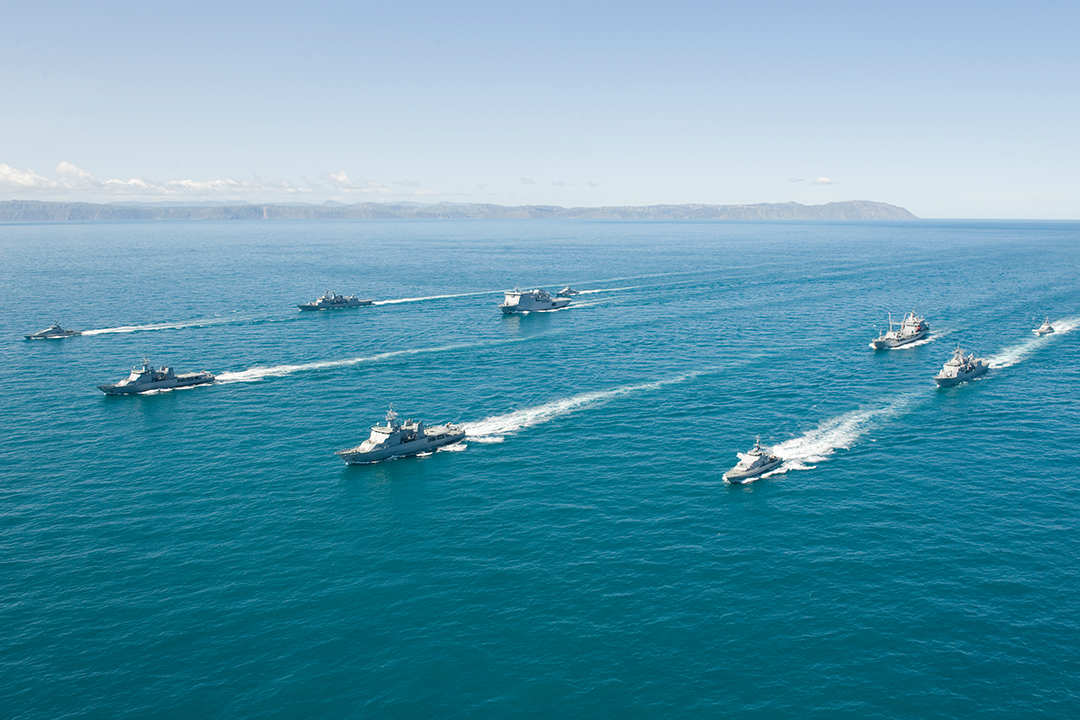Welcome to installment XLVI of Sino-Japanese Review, a monthly column on major developments in relations between China and Japan that provides a running commentary on the evolution of this important relationship and helps to put current events in perspective.
The security issues between China and Japan that attract most attention are tensions around the disputed Senkaku/Diaoyu islands and the potential for a conflict over Taiwan – these are the main drivers for the defense build-up underway in Japan. Yet there is another area that fuels Tokyo’s concerns about China’s maritime expansion, namely the series of straits that link the East China Sea and the Pacific Ocean through the Japanese archipelago. Monitoring the Chinese military vessels and aircrafts that pass through them with increasing frequency has become one of the Maritime Self-Defense Force (MSDF)’s main missions. This issue symbolizes the power shift underway in Northeast Asia, and could also become decisive in case of a regional conflagration over Taiwan.
On December 16, just as the administration of Kishida Fumio was releasing a new National Security Strategy that designated China as Japan’s “greatest strategic challenge”, the People’s Liberation Army Navy (PLAN)’s flagship vessel, the aircraft carrier Liaoning, was passing through the Miyako Strait between the main island of Okinawa prefecture and the smaller one of Miyako, accompanied by several smaller vessels. Having crossed into the Pacific Ocean, it conducted a series of military exercises before returning home two weeks later. A Chinese government official told the Yomiuri Shimbun that this had been a direct order from Xi Jinping, aiming to push back against Japan’s military build-up by conducting simulations of attacks on its Southern islands.
The incident highlights the challenge posed to Japanese security by the ability and willingness of the PLAN to maneuver around and through the Japanese archipelago. The Laioning’s passage was entirely in line with international law, since the Miyako Strait is designated as a freely usable international waterway, cutting through Japan’s territorial waters. The PLAN also regularly transits through other straits with the same status. For some of them, like the Osumi Strait between two smaller islands in Okinawa, it was in fact Japan who, after the Second World War, decided to sacrifice some of its territorial waters to leave space for an international waterway that nuclear-capable U.S. vessels could freely use without violating Japan’s three non-nuclear principles. There is perhaps no greater symbol of the power shit underway in the region than the fact that China is now the greatest beneficiary of those old concessions made to U.S. power.
Peaceful coexistence between China and Japan is difficult to imagine without routine Chinese naval transits…but these could also suddenly become a casus belli in the case of a crisis around Taiwan
That is not to say that PLAN vessels do not at times intrude into Japanese territorial waters by going through other straits that do not contain “high seas corridors”. In fact, they regularly do so. In such cases, Tokyo typically lodges a diplomatic protest, but otherwise all Chinese passages are dealt with in the same way, namely by dispatching MSDF ships for monitoring and by making the Chinese movements public. The Japanese Ministry of Defense also takes every occasion to stress how concerned it is about the rapid growth of Chinese military activities around the archipelago. There is however little Japan can do to act on those concerns outside strengthening its overall defense capabilities, since most Chinese crossings and maritime maneuvers are in line with international law and the territorial violations that do occur are too minor to warrant a harsh reaction. The typical Chinese reaction to Japanese complaints is to stress that the PLAN activities are a natural product of its growth into a “blue-water navy” capable of operating around the globe and that Tokyo should just “get used to it”.
It is indeed true that long term peaceful coexistence between China and Japan is difficult to imagine without a routinization of Chinese naval transits through the Okinawa island chain that acts as a gateway to the Pacific Ocean. Yet control of the Japanese straits could also suddenly become a casus belli between the two neighbors if a major conflict over Taiwan does erupt. One of Japan’s missions in such a case would likely be to block China’s access to the Pacific Ocean in order to make it harder for the PLAN to encircle Taiwan and blockade it. It is one more reason to imagine that Japan would inevitably become a participant in a U.S.-China showdown over the fate of the island. The specter of such an eventuality will cause Chinese transits through the Japanese straits to remain yet another source of tensions between the two countries.
Antoine Roth is assistant professor at the Faculty of Law of Tohoku University, working on Sino-Japanese relations, China's foreign relations, and East Asian international affairs. He holds a PhD in International Politics from the University of Tokyo and a MA in Asian Studies from the George Washington University and a BA in International Relations from the University of Geneva. He has previously worked at the Swiss Embassy in Tokyo and has been a visiting student at Fudan University in Shanghai.
Andrea A. Fischetti is a government scholar conducting research on Asia-Pacific Affairs and East Asian Security at the University of Tokyo and at the Asia Pacific Initiative. He was a visiting student at the Hiroshima Peace Institute of Hiroshima City University, and a research assistant at the House of Commons in the British Parliament. Mr. Fischetti earned his MA in War Studies from King’s College London, following a BA with First Class Honours in International Relations, Peace and Conflict Studies.






















